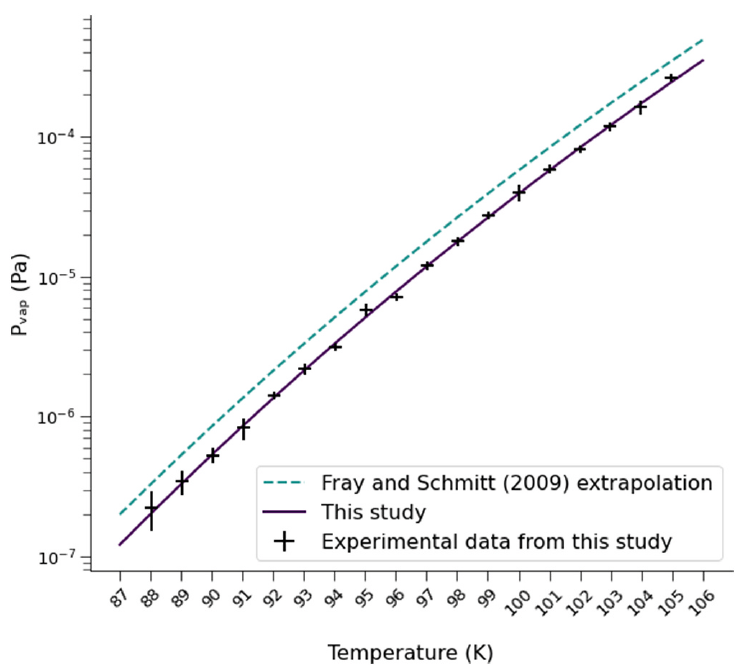
The equilibrium vapor pressures of ammonia and oxygen ices at outer solar system temperatures
Published in Planetary & Space Sci. 244 105863. DOI: 10.1016/j.pss.2024.105863
B.P. Blakleya,b,c, W.M. Grundyc,a, J.K. Steckloffd,e, S.P. Tand, J. Hanleyc,a, A.E. Englea,c, S.C. Teglera, G.E. Lindbergf,g, S.M. Raposaa,c, K.J. Kogac,a, and C.L. Thiebergera,c
(a) Department of Astronomy and Planetary Science, Northern Arizona University, Flagstaff AZ.
(b) Pasadena City College, Pasadena CA.
(c) Lowell Observatory, Flagstaff AZ.
(d) Planetary Science Institute, Tucson AZ.
(e) Department of Aerospace Engineering and Engineering Mechanics, University of Texas at Austin, Austin TX.
(f) Department of Chemistry and Biochemistry, Northern Arizona University, Flagstaff AZ.
(g) Center for Material Interfaces in Research and Applications, Northern Arizona University, Flagstaff AZ.
Abstract
Few laboratory studies have investigated the vapor pressures of the volatiles that may be present as ices in the outer solar system; even fewer studies have investigated these species at the temperatures and pressures suitable to the surfaces of icy bodies in the Saturnian and Uranian systems (<100 K, <10−9 bar). This study adds to the work of Grundy et al. (2024) in extending the known equilibrium vapor pressures of outer solar system ices through laboratory investigations at very low temperatures. Our experiments with ammonia and oxygen ices provide new thermodynamic models for these species' respective enthalpies of sublimation. We find that ammonia ice, and to a lesser degree oxygen ice, are stable at higher temperatures than extrapolations in previous literature have predicted. Our results show that these ices should be retained over longer periods of time than previous extrapolations would predict, and a greater amount of these solids is required to support observation in exospheres of airless bodies in the outer solar system.

Fig. 5. Laboratory vs. extrapolated vapor pressures of ammonia ice. The measured vapor pressures of ammonia ice from this work are shown with bars of uncertainty (black crosses) compared to polynomial extrapolations from Fray and Schmitt (2009)/Brown and Ziegler (1980) (dotted line). The polynomial recommended by this work is shown as a purple solid line. This work shows that vapor pressures are lower than accepted values by a factor of 1.5.